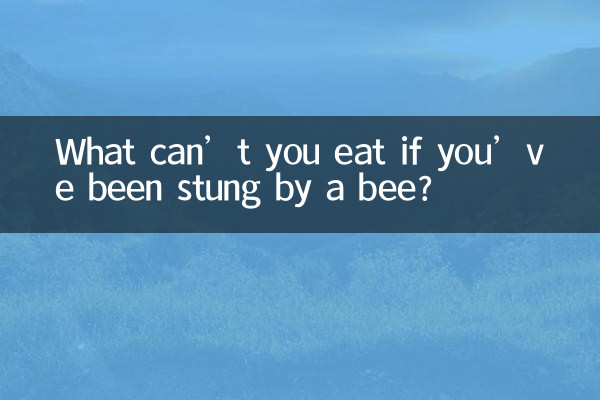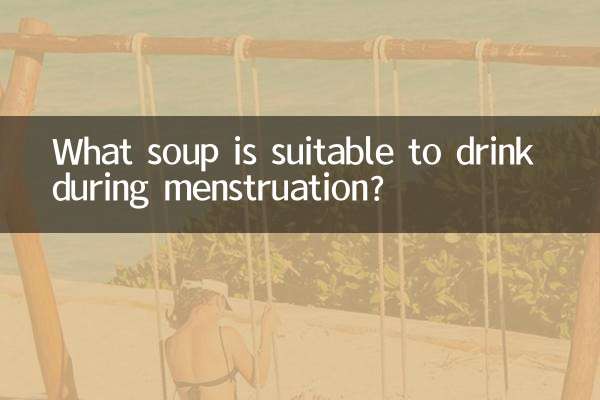What can’t you eat if you’ve been stung by a bee?
Recently, the topic of dietary taboos after being stung by a bee has sparked heated discussions on social media. Many netizens shared their personal experiences after being stung by bees and asked what foods to avoid. This article will give you a detailed answer to this question based on the hot discussions and medical advice on the Internet in the past 10 days.
1. Diet taboos after being stung by a bee

After being stung by a bee, the body will have varying degrees of allergic reactions. At this time, special attention needs to be paid to the diet to avoid aggravating the symptoms. The following are common taboo foods:
| food category | specific food | Reasons for taboos |
|---|---|---|
| spicy food | Chili pepper, Sichuan peppercorns, garlic, ginger | May aggravate local inflammatory response |
| Seafood | Fish, shrimp, crab, shellfish | May cause allergic reactions |
| Alcohol | Beer, liquor, red wine | May worsen swelling and itching |
| high protein food | Eggs, milk, soy products | May induce or worsen allergies |
| tropical fruits | Mango, pineapple, lychee | May cause skin allergies |
2. The correct way to deal with bee stings
In addition to dietary taboos, it is also important to properly treat bee sting wounds. Here are the steps recommended by medical experts:
1.Remove the stinger immediately: Use the edge of a credit card or a blunt blade to gently scrape out the stinger, avoiding squeezing the venom sac.
2.Clean the wound: Wash the wound thoroughly with soap and water to reduce the risk of infection.
3.Cold compress treatment: Apply ice pack or cold towel to the sting area for 15-20 minutes each time to reduce pain and swelling.
4.drug handling: Topical antihistamine ointment or oral anti-allergic drugs can be used. In severe cases, timely medical treatment is required.
3. Recommended diet after being stung by a bee
After being stung by a bee, it is recommended to choose light and easy-to-digest food to help the body recover:
| food category | Reasons for recommendation |
|---|---|
| Warm and cool fruits | Pears, watermelons, apples, etc., can clear away heat and detoxify |
| Vegetables | Cucumber, winter melon, bitter melon, etc., have diuretic and swelling effects |
| Cereals | Millet porridge, white porridge, etc., easy to digest and absorb |
| drinks | Light salt water, warm water, mung bean soup, etc. to help detoxify |
4. Severe allergic reactions that require vigilance
About 3% of the population has severe allergic reactions to bee venom, and may experience the following symptoms:
1. Difficulty breathing or wheezing
2. Swelling of face and throat
3. Sharp drop in blood pressure
4. Confusion or syncope
You must seek medical attention immediately if you develop these symptoms, otherwise it may be life-threatening. People with a history of bee venom allergy should carry an epinephrine auto-injector with them.
5. Practical suggestions for preventing bee stings
1. Avoid using perfume or strong-smelling skin care products during outdoor activities
2. Wear light-colored, smooth, long-sleeved clothing
3. Keep a distance of more than 5 meters when discovering a beehive.
4. Stay calm when encountering bees and leave slowly
5. Do not swat or drive away bees at will
Through the above content, we have a comprehensive understanding of the dietary taboos and correct treatment methods after being stung by a bee. By remembering this knowledge, you can protect yourself and your family’s health during critical moments. If symptoms continue to worsen, be sure to seek medical attention promptly.

check the details

check the details